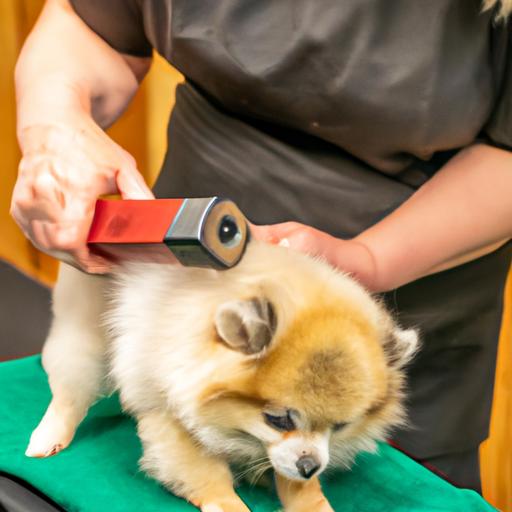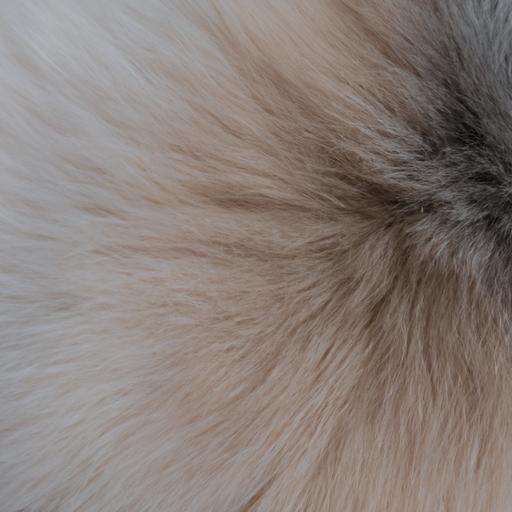If you are a Pomeranian owner, shedding is a natural occurrence that you may have to deal with. These adorable little fluff balls shed a lot, and it can be frustrating to keep up with all the fur. But don’t worry, shedding is a natural process that all dogs go through, and with the right knowledge, you can manage it effectively.
Understanding Pomeranian shedding is crucial for every owner. It not only helps you manage your pet’s shedding but also gives you insight into their overall health. Shedding can be an indicator of several health issues, such as allergies or medical conditions. By learning how to manage shedding, you can ensure that your furry friend stays happy and healthy.
In this article, we will discuss everything you need to know about Pomeranian shedding. From understanding the causes of shedding to managing it effectively, we’ve got you covered. So, if you’re tired of constant shedding and want to learn more about your furry friend’s fur, keep reading!
Contents
Understanding Pomeranian Shedding

As a Pomeranian owner, it’s essential to understand the different types of shedding that your furry friend may experience. Pomeranians shed their fur regularly, and the amount and frequency of shedding can vary depending on several factors.
Types of Pomeranian Shedding
There are two types of shedding that Pomeranians experience: seasonal and non-seasonal shedding. Seasonal shedding occurs twice a year, typically during the spring and fall when the weather changes. During this time, Pomeranians shed their undercoat to prepare for the upcoming season. Non-seasonal shedding, on the other hand, occurs randomly throughout the year and can be caused by several factors.
Causes of Pomeranian Shedding
Several factors can cause Pomeranian shedding. One of the most common causes is genetics. Pomeranians are a double-coated breed, meaning they have a thick undercoat and a longer topcoat. This double coat is designed to keep them warm in cold weather, but it also means that they shed more than other breeds.
Other causes of Pomeranian shedding include poor nutrition, stress, allergies, and medical conditions. Ensuring that your furry friend is getting a balanced diet and managing their stress levels can help reduce shedding.
Shedding Patterns of Pomeranians
Pomeranians shed their fur in a specific pattern. They typically shed their undercoat first, followed by their topcoat. It’s essential to understand this pattern so that you can effectively manage shedding. Regular grooming can help remove loose fur and prevent it from accumulating on your furniture and clothing.
By understanding the types of shedding that Pomeranians experience, the causes of shedding, and the shedding patterns, you can effectively manage your furry friend’s shedding and ensure that they stay healthy and happy.
Managing Pomeranian Shedding

As a Pomeranian owner, managing your furry friend’s shedding is crucial to ensure their health and happiness. Here are some tips to help you manage shedding effectively:
Grooming Tips to Reduce Shedding
Regular grooming is essential to keep your Pomeranian’s shedding under control. Brushing their fur at least once a day can help remove loose fur and prevent matting. You can use a slicker brush or a pin brush to groom your Pomeranian. They both work well in removing loose fur and detangling the hair.
Another tip is to use a deshedding tool. These tools are specially designed to remove loose fur and reduce shedding. They are available in different sizes and are easy to use. When using a deshedding tool, make sure to be gentle and not apply too much pressure.
Recommended Grooming Tools for Pomeranians
When it comes to grooming tools, there are many options available in the market. However, not all of them are suitable for Pomeranians. Here are some recommended grooming tools for Pomeranians:
- Slicker brush or pin brush
- Deshedding tool
- Pet hair dryer
- Nail clipper
- Toothbrush and toothpaste
Dietary Changes to Reduce Shedding
Diet plays a vital role in your Pomeranian’s health and shedding. Feeding your furry friend a high-quality diet that is rich in nutrients can help reduce shedding. Foods that are high in omega-3 fatty acids, such as salmon or flaxseed, can help improve your Pomeranian’s coat and reduce shedding.
Additionally, make sure that your Pomeranian is getting enough water. Dehydration can lead to dry skin, which can cause excessive shedding. Providing your furry friend with fresh, clean water can help keep their skin hydrated and healthy.
By implementing these grooming tips and dietary changes, you can manage your Pomeranian’s shedding effectively. Remember, shedding is a natural process, and with the right care and attention, you can keep your furry friend healthy and happy.
Health Issues Related to Pomeranian Shedding
Pomeranian shedding can be an indicator of several health issues that you should be aware of as a pet owner. Here are some common health problems related to excessive shedding in Pomeranians.
Skin Problems Caused by Excessive Shedding
Pomeranian shedding can cause several skin problems, such as dryness, itching, and flakiness. These symptoms can lead to the development of hot spots, which are painful, inflamed areas of the skin. If left untreated, hot spots can become infected and lead to more severe health problems.
To prevent skin problems caused by excessive shedding, it’s essential to groom your Pomeranian regularly. Brushing your pet’s fur daily can help remove loose hair and prevent matting. Additionally, using a high-quality shampoo and conditioner can help keep your pet’s skin moisturized and healthy.
Allergies Related to Pomeranian Shedding
Allergies are a common health problem related to Pomeranian shedding. Dogs can develop allergies to a wide range of substances, including food, pollen, and dust. Allergies can cause several symptoms, such as itching, sneezing, and respiratory problems.
If you suspect that your Pomeranian has allergies, consult with your veterinarian. They can perform tests to identify the allergen and recommend an appropriate treatment plan. Treatment options for allergies include medications, dietary changes, and immunotherapy.
Medical Conditions That Cause Excessive Shedding
Excessive shedding can also be a symptom of several medical conditions in Pomeranians. These conditions include hypothyroidism, Cushing’s disease, and skin infections. If you notice that your pet is shedding more than usual, consult with your veterinarian. They can evaluate your pet’s health and recommend appropriate treatment options.
In conclusion, understanding the health issues related to Pomeranian shedding is crucial for every pet owner. By identifying the symptoms of health problems, you can ensure that your furry friend stays healthy and happy. Regular grooming and veterinary check-ups can help prevent and manage health problems related to Pomeranian shedding.
Addressing Pomeranian shedding concerns
As a Pomeranian owner, dealing with excessive shedding can be frustrating. However, there are several ways you can manage it effectively. Here are a few tips to help you deal with excessive shedding:
How to deal with excessive shedding
-
Grooming: Grooming your Pomeranian regularly can help reduce shedding. Brushing your pet’s fur at least twice a week will help remove loose fur and prevent it from spreading around your home.
-
Diet: Feeding your Pomeranian high-quality food that is rich in omega-3 and omega-6 fatty acids can help keep their skin and coat healthy. Consult with your veterinarian to determine the best diet for your furry friend.
-
Supplements: Supplements such as fish oil and biotin can help improve your pet’s coat and reduce shedding. However, always consult with your veterinarian before giving your pet any supplements.
When to seek professional help
If you notice excessive shedding that is not typical for your Pomeranian, it may be a sign of an underlying health issue. If you notice any of the following symptoms, it’s best to seek professional help:
- Bald patches
- Redness or irritation on the skin
- Excessive scratching or itching
- Changes in behavior or activity levels
Your veterinarian can help determine the underlying cause of your pet’s excessive shedding and suggest appropriate treatment.
Understanding the shedding process
Shedding is a natural process that all dogs go through. Pomeranians typically shed twice a year, during the fall and spring seasons. Shedding is essential for your pet’s health, as it helps remove old and damaged fur and promotes the growth of new fur.
Understanding the shedding process and how to manage it effectively can help keep your Pomeranian healthy and happy. By following the tips mentioned above and seeking professional help when necessary, you can reduce shedding and keep your home clean.
Conclusion
In conclusion, Pomeranian shedding is a natural process that every owner should understand. Shedding can indicate several health issues, so it’s crucial to monitor your pet’s shedding patterns and take the necessary steps to manage it effectively.
By following the tips and advice outlined in this article, you can reduce the amount of shedding and keep your furry friend healthy and happy. Remember, regular grooming, a healthy diet, and proper medical care are the keys to managing Pomeranian shedding.
At Critter Kingdom, we understand the importance of providing reliable and accurate information to pet owners. We hope that this article has been helpful in understanding Pomeranian shedding and how to manage it effectively. If you have any questions or concerns, feel free to reach out to our team of pet experts.

